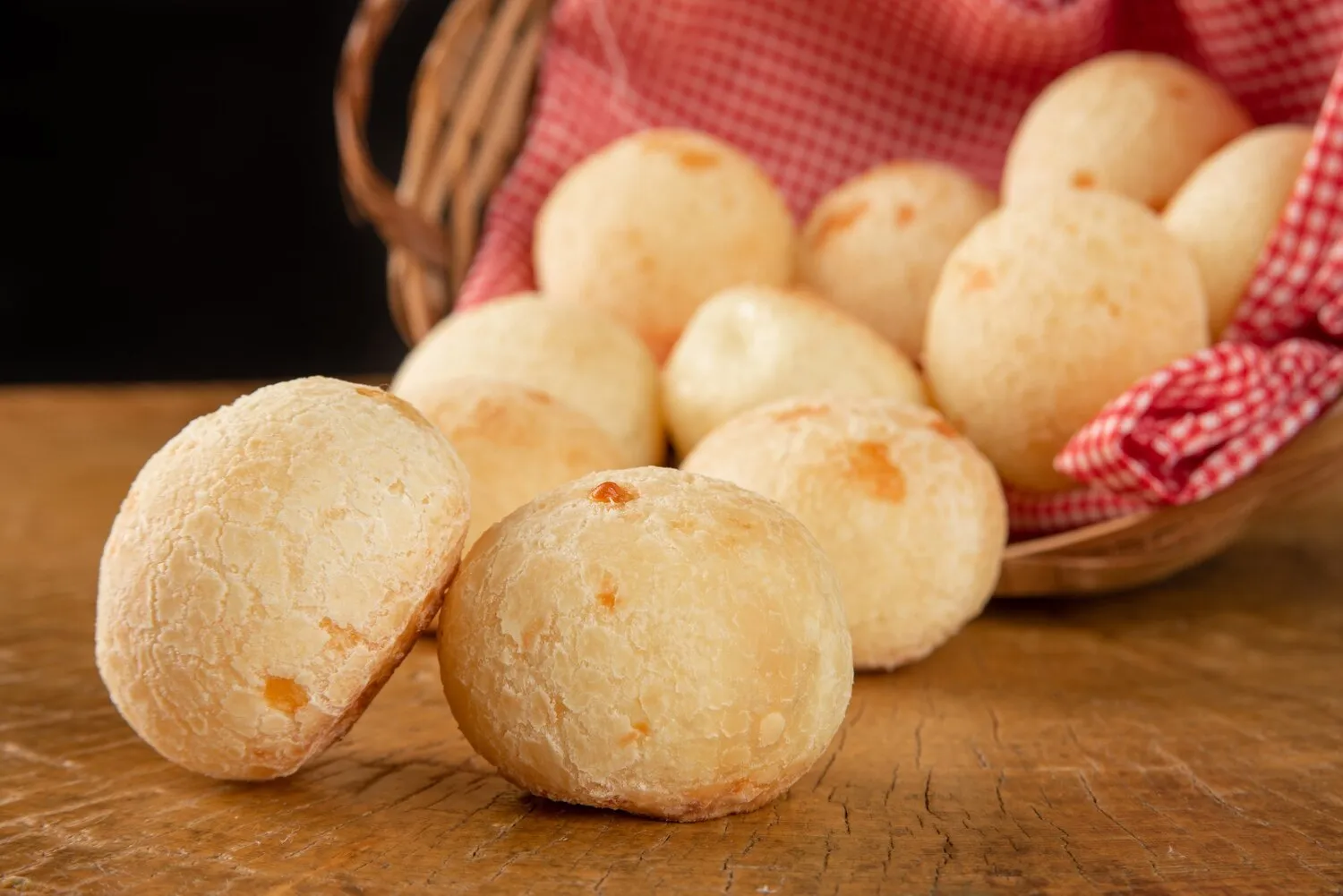
Pão de Queijo
Brazilian cheese bread, a small, baked cheese roll or cheese bun, a popular snack and breakfast food in Brazil.
Nutrition Facts
* The % Daily Value (DV) tells you how much a nutrient in a serving of food contributes to a daily diet. 2,000 calories a day is used for general nutrition advice.
Café Raphaella
Pão de Queijo's origins are somewhat murky, but it's believed to have emerged in the state of Minas Gerais during the 18th century. The scarcity of wheat flour and abundance of cassava starch (tapioca flour or polvilho) and local cheese led to its creation. Enslaved Africans are often credited with its initial development, using readily available ingredients to create a filling and flavorful bread.
Pão de Queijo is deeply ingrained in Brazilian culture, representing hospitality, comfort, and a taste of home. It's a staple at breakfast, afternoon snacks, and social gatherings.
Breakfast Staple
Pão de Queijo is a common breakfast item throughout Brazil, often enjoyed with coffee. It's a quick and satisfying way to start the day.
Social Gatherings
Pão de Queijo is frequently served at parties, potlucks, and other social events. Its small size and delicious flavor make it a popular choice for sharing.
Regional Variations
While Minas Gerais is considered the birthplace of Pão de Queijo, regional variations exist across Brazil, with different types of cheese and added ingredients being used.
Symbol of Hospitality
Offering Pão de Queijo to guests is a sign of warmth and hospitality in Brazilian culture. It's a way of making visitors feel welcome and comfortable.
Pão de Queijo offers a unique flavor profile that blends savory, cheesy, and slightly tangy notes, with a delightful chewiness.
The predominant flavor is cheese, traditionally from Minas cheese (queijo Minas), which varies in intensity and saltiness depending on the type used (fresco, meia cura, curado). The tapioca flour contributes a subtle tang and gives the bread its signature chewy texture. Butter or oil adds richness, and the eggs bind the ingredients together. The overall flavor is savory and comforting, with a slightly tangy aftertaste. Some variations may include herbs like oregano or rosemary for added complexity.
Tapioca Flour Choice
Using a blend of sweet (doce) and sour (azedo) tapioca flour is crucial for the characteristic chewy texture. The sour flour contributes to the rise and a slightly tangy flavor.
Cheese Quality
The quality of the cheese significantly impacts the flavor. Using fresh, high-quality Minas cheese or a blend of cheeses will result in a more flavorful Pão de Queijo. Parmesan cheese is also a common addition.
Mixing Technique
Scalding the tapioca flour with hot liquid (water, milk, or oil) before adding the other ingredients helps activate the starch and contributes to the bread's signature chewiness.
Baking Temperature
Baking at a high temperature (around 375-400°F or 190-200°C) ensures that the Pão de Queijo puffs up and develops a slightly crispy exterior.
Freezing for Later
Pão de Queijo dough can be frozen before baking. Simply shape the dough into balls and freeze them on a baking sheet. Once frozen, transfer them to a freezer bag. Bake directly from frozen, adding a few extra minutes to the baking time.
Explore additional Handy food dishes and restaurants
Explore Handy foodDiscover top dining spots and culinary experiences in Sao Joao Batista.
Explore Sao Joao BatistaLearn more about the food culture, restaurant scene, and culinary heritage of Brazil.
Explore Brazil